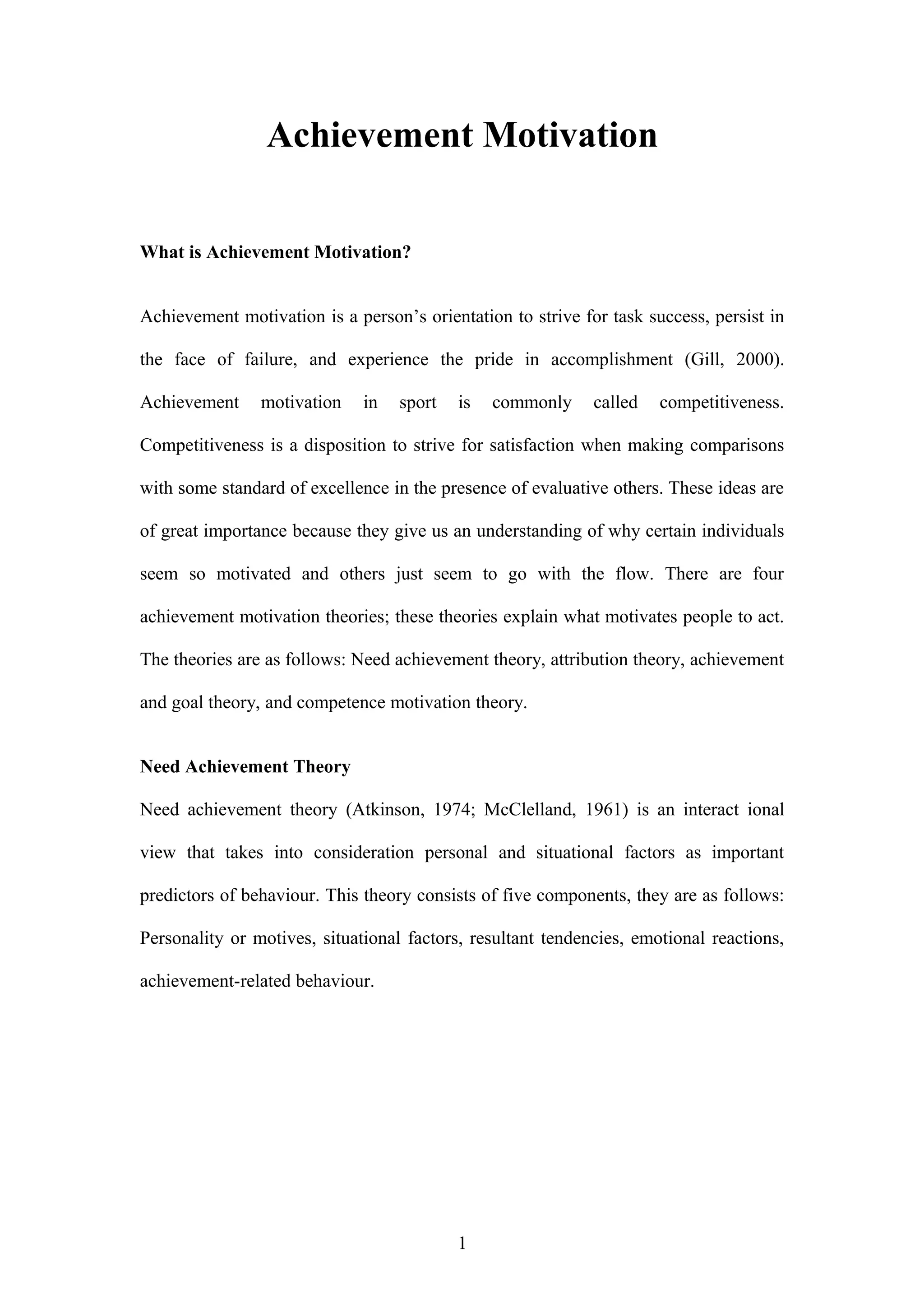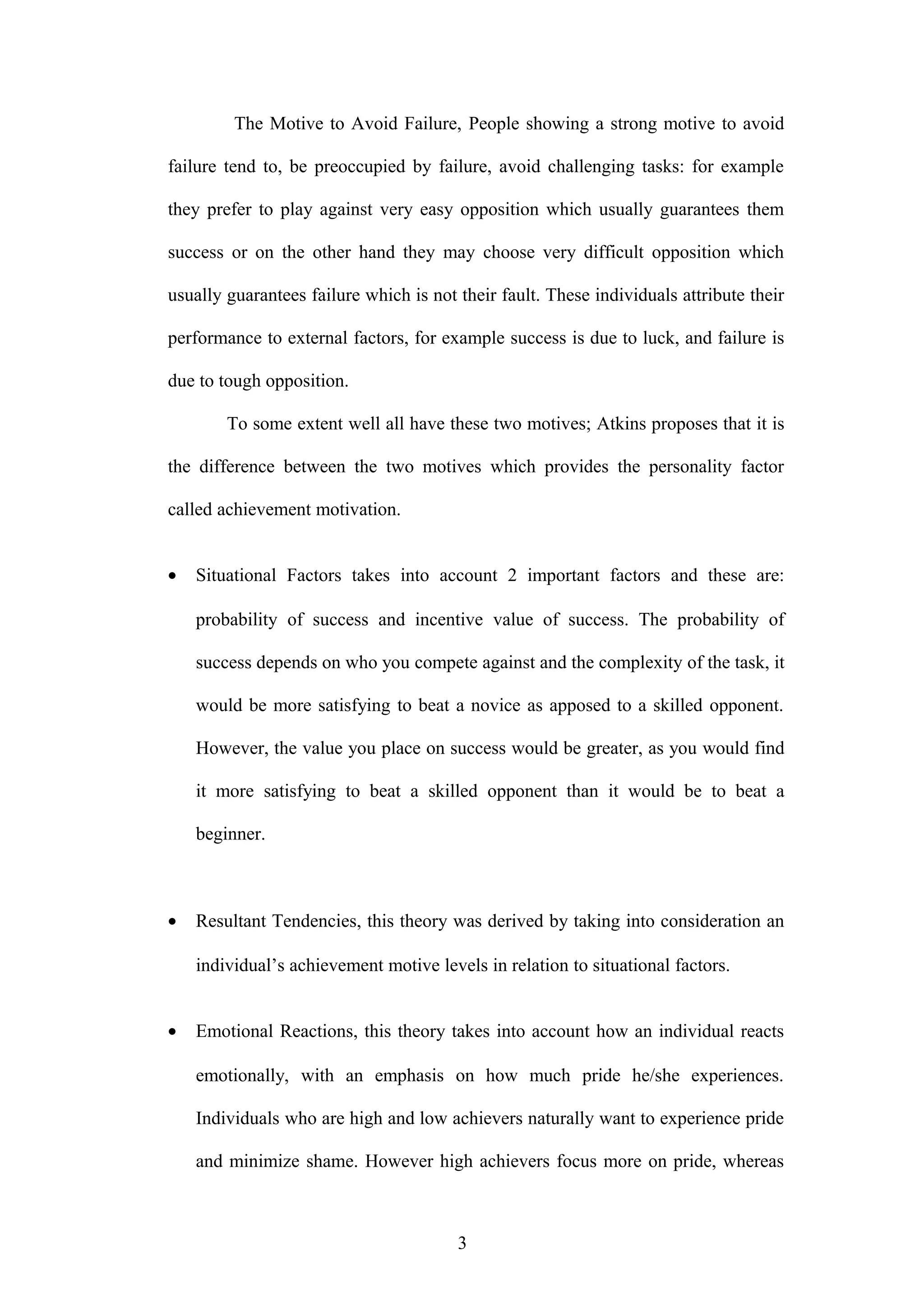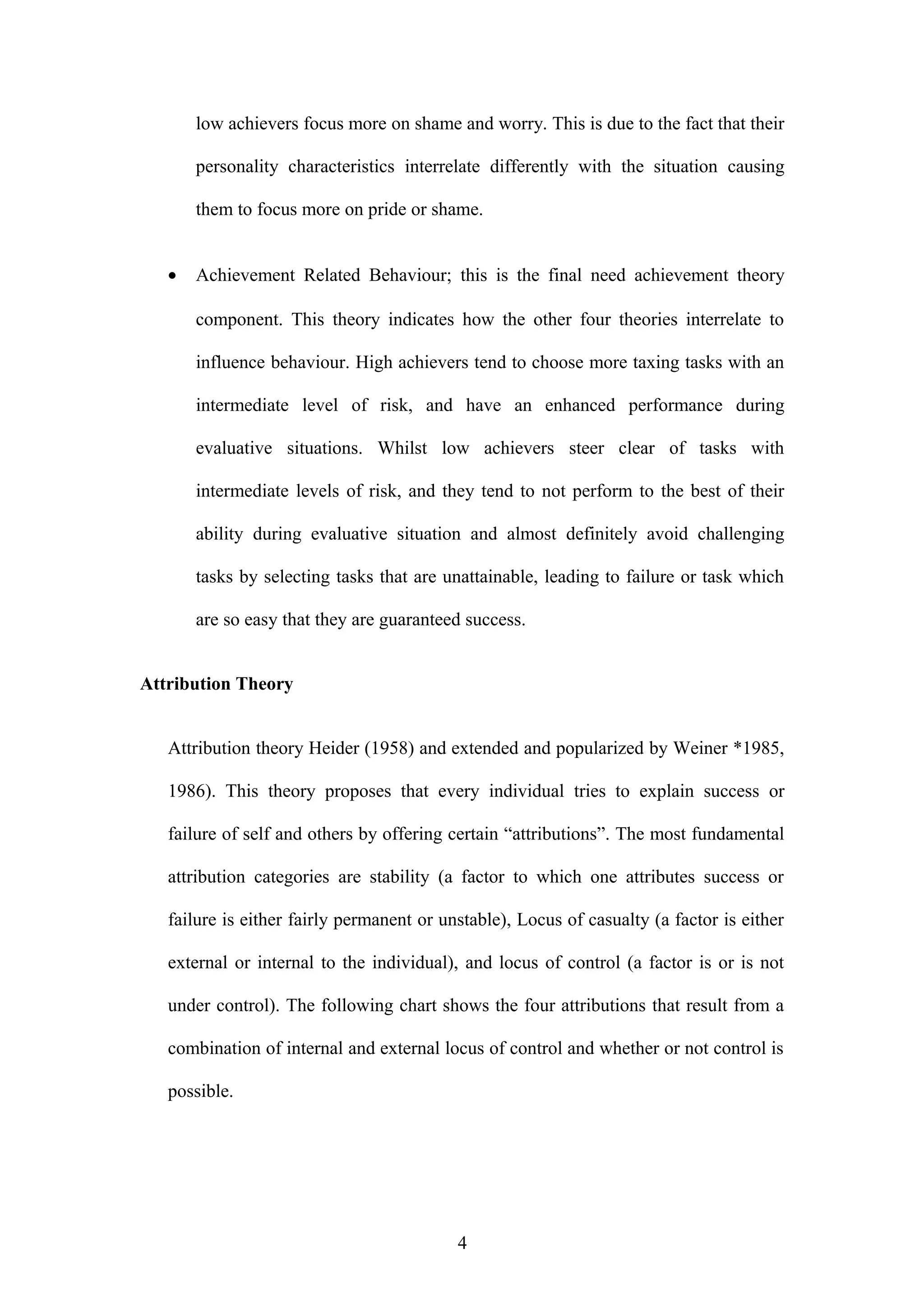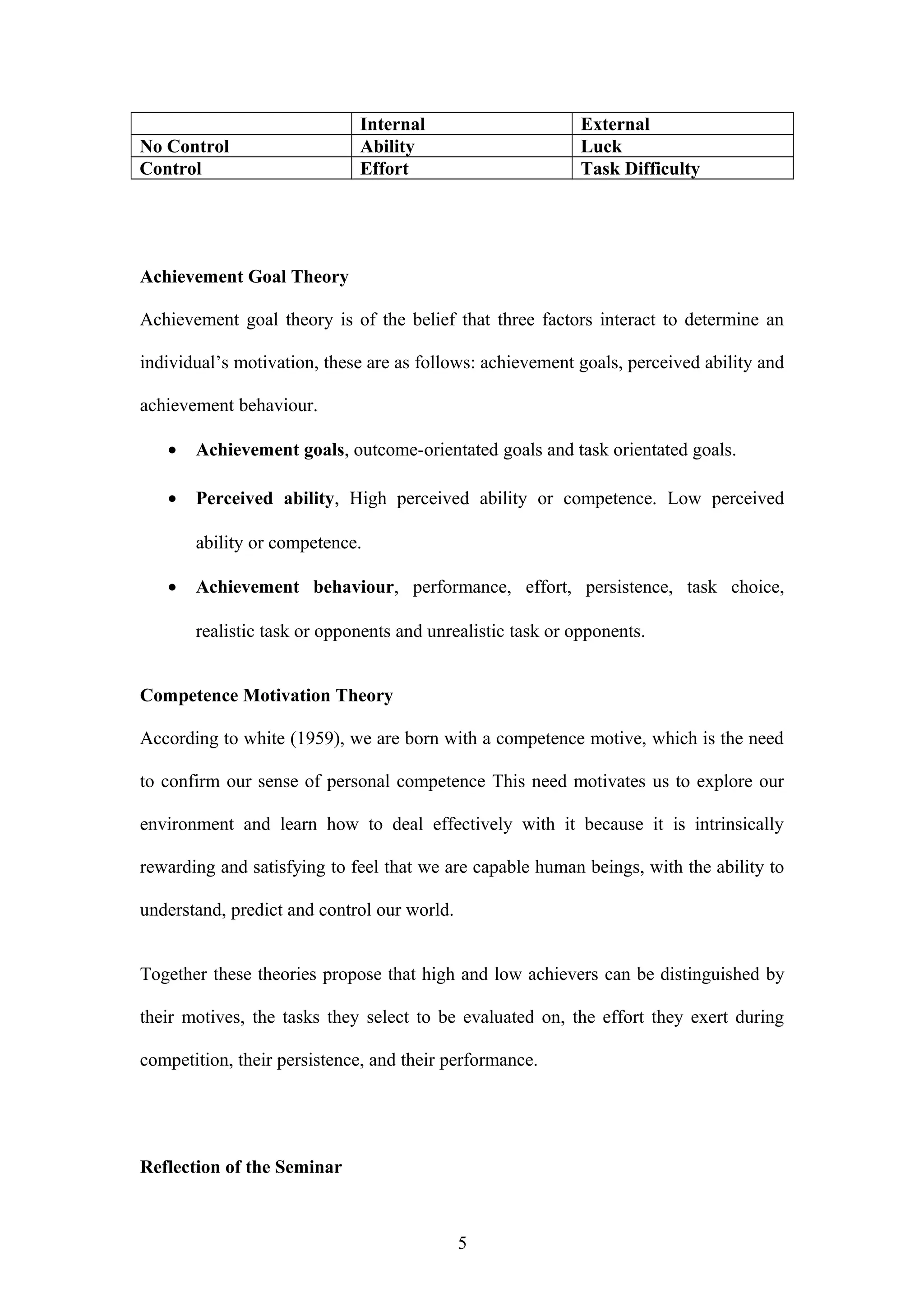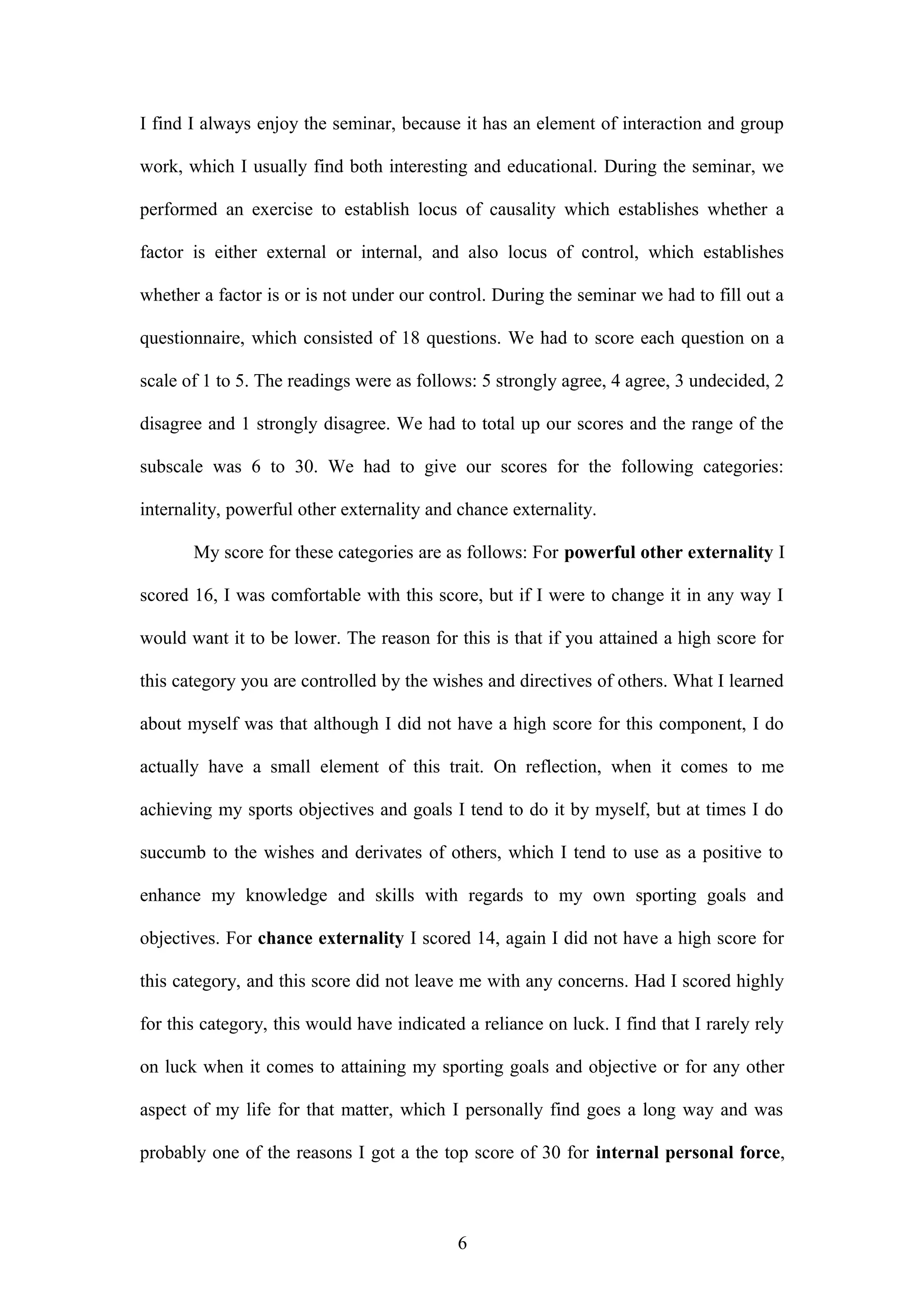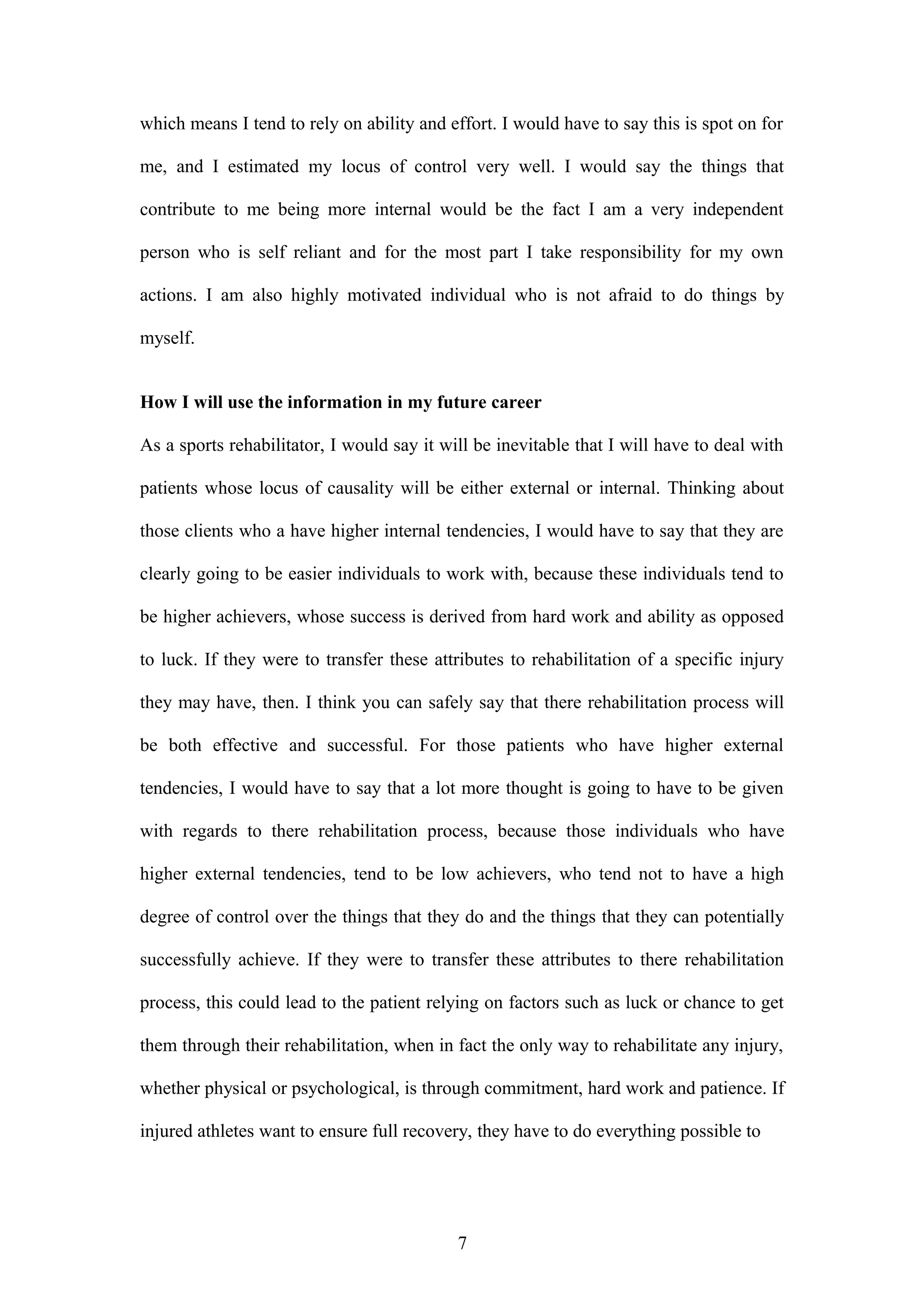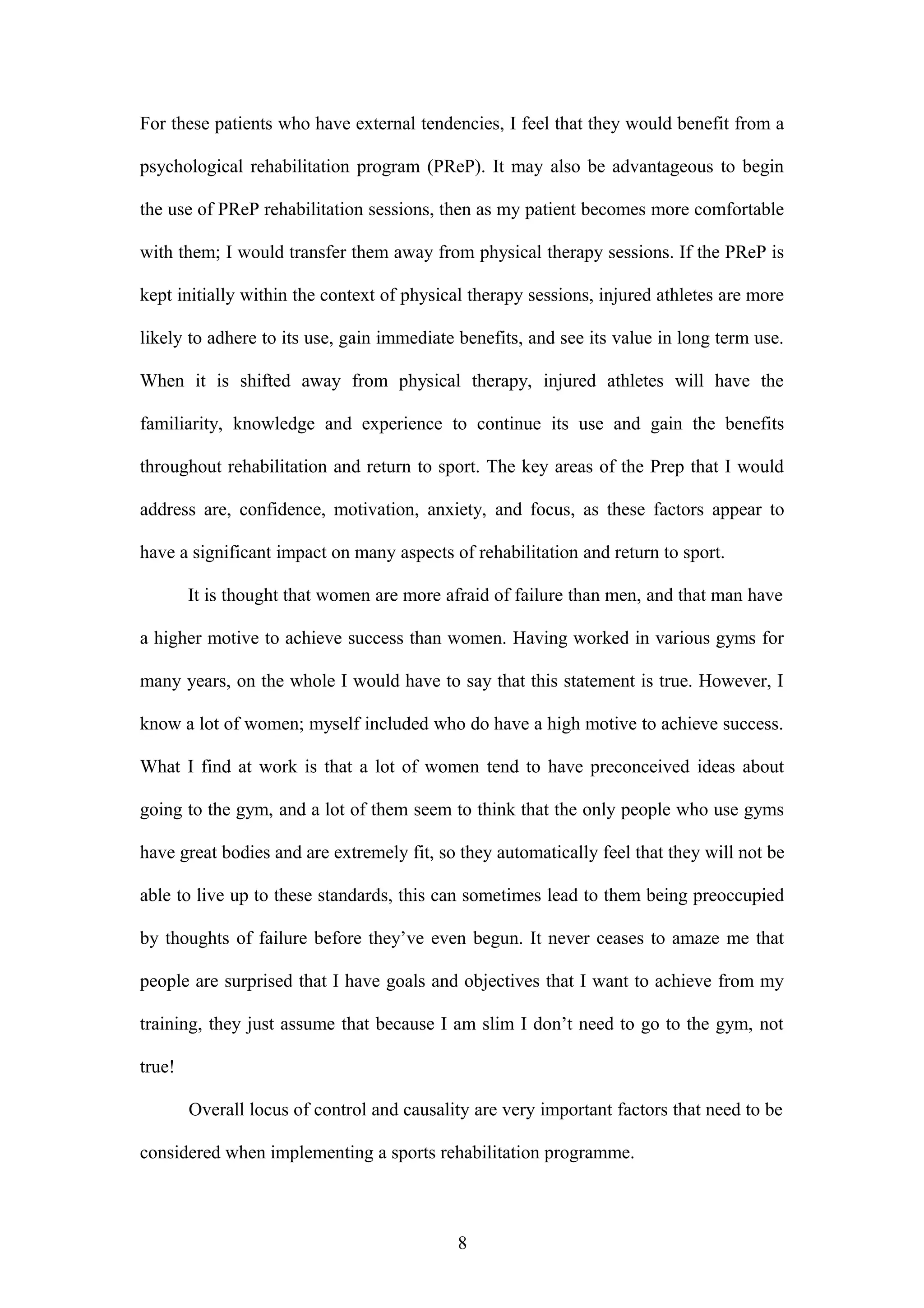This document discusses achievement motivation and its underlying theories. It defines achievement motivation as a person's drive to succeed and persist in the face of challenges. Four main theories are described: need achievement theory, attribution theory, achievement goal theory, and competence motivation theory. Need achievement theory proposes that individuals are motivated by either a need for success or a fear of failure. Attribution theory examines how people explain their successes and failures. Achievement goal theory looks at how goals, ability, and behavior interact. Competence motivation theory states that people are motivated to feel capable. The document provides details on each theory and reflects on applying the understanding of motivation to sports rehabilitation.
